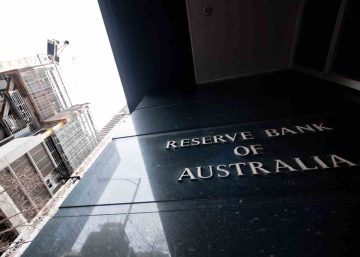The ATO has signalled that it is willing to pursue professional services firms that divert profits to avoid tax.
BACKGROUND
The ATO has been concerned for some time about how many professional services firms (lawyers, accountants, architects, medical practices, engineers, architects etc.) are structured to operate through trusts, companies and partnerships of discretionary trusts and how the profits from these practices are being taxed.
The ATO’s finalised position on the allocation of professional services firm profits started on 1 July 2022.
The ATO’s guidance uses a series of factors to determine the level of risk associated with profits generated by a professional services firm and how they flow through to individual practitioners and their related parties.
The ATO guidance takes a strong stance on structures designed to divert income in a way that results in principal practitioners receiving relatively small amounts of income personally for their work and reducing their taxable income. Where these structures appear to be in place to divert income to create a tax benefit for the professional, Part IVA may apply. Part IVA is an integrity rule which allows the Commissioner to remove any tax benefit received by a taxpayer where they entered into an arrangement in a contrived manner in order to obtain a tax benefit. Significant penalties can also apply when Part IVA is triggered.
ATO wields Part IVA in professional practice cases
Two cases before the Administrative Appeals Tribunal demonstrate how serious the Australian Taxation Office (ATO) is about making sure professional services firms are appropriately taxed.
In both cases, the ATO pursued the practices using Part IVA. Part IVA is an area of the income tax law that enables the Tax Commissioner to attack schemes or arrangements undertaken to obtain a tax benefit, enabling him to cancel any benefit derived by the scheme. That is, you could have a legally viable structure in place but if the only purpose of that structure is to reduce tax, then the Commissioner can use Part IVA to remove the tax benefit. And, if Part IVA applies, you may end up with an additional tax liability as well as an administrative penalty of either 25% or 50% of the tax shortfall amount.
Broadly, the cases involved a solicitor who controlled a number of practice trusts that derived profits through marketing and facilitating tax planning arrangements.
While the arrangement in each case was complex and involved a large number of steps, the practice trusts ensured their business profits weren’t subject to tax by essentially making trust distributions on paper through a series of trusts and ultimately to either a company that had existing tax losses, or a tax-exempt entity. However, the real funds relating to the trust distribution (less a commission paid for the use of these entities) were ultimately received by the solicitor or their associated entities in the form of a loan.
Takeaways for professional services firms
It’s important to be aware that there are several ways in which the ATO can potentially challenge arrangements involving the distribution of profits from a professional practice. For example:
- If a trading entity derives personal services income that mainly relates to the skills and efforts of a particular individual, the ATO has certain expectations around ensuring the profits are assessed to the individual performing the work.
- If a trading entity doesn’t derive personal services income but income from a business structure involving a professional practice, the ATO has set out its compliance approach to targeting arrangements that don’t result in a reasonable level of profit being taxed in the hands of the individual practitioners.
- If a trust makes paper distributions to loss entities to ‘soak up’ deductions or losses, there are integrity rules in section 100A, another area of tax law under intense scrutiny, that need to be considered.
PCG 2021/4 – Allocation of professional firm profits
The guidance sets out a series of tests which are used to calculate a risk score. This risk score is then used to classify the practitioner as falling within a Green, Amber or Red risk zone, which determines if the ATO should take a closer look at you and your firm. Those in the green zone are at low risk of the ATO directing its compliance efforts to you. Those in the red zone, however, can expect the ATO to conduct further analysis as a matter of priority which could lead to an ATO audit.
Before calculating the risk score it is necessary to consider two gateway tests:
- Gateway 1 – considers whether there is commercial rationale for the business structure and the way in which profits are distributed, especially in the form of remuneration paid. Red flags would include arrangements that are more complex than necessary to achieve the relevant commercial objective, and where the tax result is at odds with the commercial venture, for example, where a tax loss is claimed for a profitable commercial venture.
- Gateway 2 – requires an assessment of whether there are any high-risk features. The ATO sets out some examples of arrangements that would be considered high-risk, including the use of financing arrangements relating to transactions between related parties.
If the gateway tests are passed, then you can self-assess your risk level against the ATO’s risk assessment factors. There are three factors to be considered:
- The professional’s share of profit from the firm (and service entities etc) compared with the share of firm profit derived by the professional and their related parties;
- The total effective tax rate for income received from the firm by the professional and their related parties; and
- The professional’s remuneration as a percentage of the commercial benchmark for the services provided to the firm.
The resulting ‘score’ from these factors determines your risk zone. Some arrangements that were considered low risk in prior years under the ATO’s previous guidance may now fall into a higher risk zone. In these cases, the ATO is allowing a transitional period for those practitioners to continue to apply the previous guidelines until 30 June 2024.
Steps to take prior to the transitional period ending
For professional services firms, it is important to assess your risk level and this needs to be done for each principal practitioner separately. Those in the amber or red zone who want to be classified as low-risk need to take action to move into the lower-risk zone.
Note that where other compliance issues are present – such as failure to recognise capital gains, misuse of the superannuation systems, failure to lodge returns or late lodgement, etc., – a green zone risk assessment will not apply.
How can we help?
If you have any questions regarding PCG2021/4, your practice structure or your distribution arrangements, please get in touch with our tax specialists.
You can find out more about working with Marsh & Partners here. As your Absolute.Account.Ability partner we’re on a mission to make your business life better.
Subscribe to our newsletter
Get tax updates and business tips delivered straight to your inbox.







